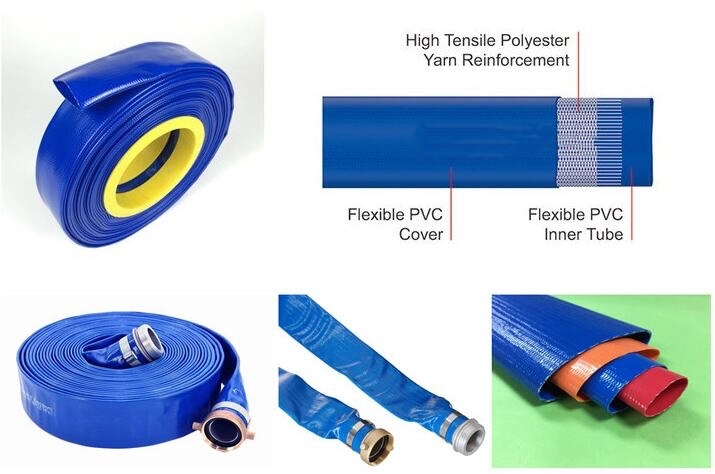Comparing PVC and Rubber Air Hoses for Durability and Performance
PVC Air Hose vs. Rubber Air Hose A Comprehensive Comparison
When it comes to choosing air hoses for various applications, two of the most popular materials are PVC (Polyvinyl Chloride) and rubber. Both options offer unique benefits and drawbacks, making them suitable for different tasks and environments. In this article, we'll explore the key differences between PVC air hoses and rubber air hoses to help you make an informed decision for your specific needs.
Material Composition
PVC air hoses are made from synthetic plastic polymer, which gives them a lightweight, flexible nature. This material is typically more affordable than rubber, making PVC a popular choice for homeowners and DIY enthusiasts. On the other hand, rubber air hoses are made from natural or synthetic rubber, which provides increased durability and flexibility, especially in challenging conditions.
Flexibility and Handling
One of the most noticeable differences between PVC and rubber air hoses is their flexibility. PVC hoses are generally more rigid, especially in colder temperatures. While they can handle light to moderate tasks effectively, they may become less flexible in extreme conditions, which can lead to kinks and twists during use.
Rubber hoses, however, excel in this area; they remain flexible and pliable even in colder weather. This flexibility not only makes them easier to handle but also less prone to kinking or tangling, making them a more user-friendly option for those who need to maneuver their hoses frequently.
Durability and Longevity
Durability is a significant factor to consider when choosing between PVC and rubber hoses. While PVC hoses are resistant to mildew and offered in various sizes and lengths, they tend to have a shorter lifespan, especially when exposed to UV radiation or extreme weather conditions. Over time, they can become brittle, leading to cracks and leaks.
Rubber hoses, conversely, are known for their durability and ability to withstand harsher environments. They are generally more resistant to abrasion, heat, and chemicals, which makes them suitable for industrial applications and heavy-duty tasks. If you need a hose that can endure a lot of wear and tear, a rubber air hose would be the better choice.
Temperature Resistance
pvc air hose vs rubber

Temperature variation is another critical factor when selecting air hoses. PVC hoses have a limited temperature range, which affects their performance. They usually operate effectively at temperatures between 32°F and 150°F (0°C to 65°C). However, extreme cold can cause PVC to harden and crack, while extreme heat can make the hose more pliable but prone to damage.
Rubber hoses excel in this aspect, as they can typically operate within a broader temperature range. Many rubber hoses can perform well in temperatures as low as -20°F (-29°C) and as high as 200°F (93°C). This makes them more versatile, especially for jobs that require exposure to varied and extreme conditions.
Weight and Portability
Portability can be a deciding factor for those who need to transport hoses frequently. Lightweight and easy to coil, PVC air hoses are more convenient for this purpose. If you require a hose for casual use, such as inflating tires or gardening—all while maintaining ease of transport—a PVC hose would be an excellent option.
Rubber hoses, due to their dense construction, are generally heavier and less portable. However, their robustness compensates for the added weight, especially in industrial settings where a sturdy and durable hose is paramount.
Cost Considerations
Cost is often a major deciding factor in material selection. PVC air hoses are usually less expensive than rubber hoses, making them an attractive option for budget-conscious consumers or those who only need a hose for occasional tasks. However, it’s important to consider that while PVC hoses may save you money upfront, they may require replacement more often due to wear and tear.
In contrast, rubber hoses generally come with a higher initial price tag but offer greater durability and longevity. For heavy-duty applications or professional use, investing in a rubber hose may save you money in the long run due to its durability.
Conclusion
When deciding between PVC and rubber air hoses, consider your specific needs and working conditions. If flexibility, portability, and a lower price are your priorities, a PVC air hose may suffice. However, for more demanding tasks requiring durability, temperature resistance, and long-term use, rubber air hoses are the superior choice. Ultimately, understanding these factors will help you choose the right air hose for your project, ensuring optimal performance and satisfaction.
-
Top Quality Oxy Acetylene Hoses for Sale Fit for Welding DemandsNewsJul.28,2025
-
The Future of Pneumatic Air Tubes in IndustryNewsJul.28,2025
-
Superior and Reliable LPG Hose Pipe Solutions for Every NeedNewsJul.28,2025
-
Exceptionally Durable and Versatile Premium Braided PVC TubingNewsJul.28,2025
-
Best Adapters for Connecting Garden Hose to PVC Pipe ConnectionsNewsJul.28,2025
-
The Essential Role of LPG Hoses in Safe and Efficient Gas DistributionNewsJul.16,2025














